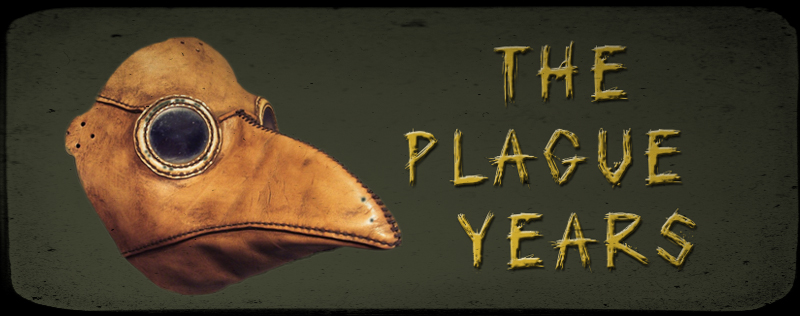So now what do I do with the rest of the day?
I'm still a cryptic crossword addict, unrepentant. I spend some of every day working on puzzles, mostly from The Globe & Mail, occasionally from The Guardian. Sometimes, it's far too much of the day. But probably not today, because today I beat my personal best time to solve a Globe puzzle: 22 minutes 50 seconds flat, completed before 9:30 in the morning.
Here are the last two thorny clues:
- "Still waiting for a formal proposal?" (10)
It's tricky because the real clue is "still," meaning "at rest" - not, as the syntax suggests, "continuing to." The answer is formed from a word that in some contexts can mean the same as "formal proposal." The answer: motionless.
- "Two birds, not the tern, make a tasty morsel" (6)
Very gnarly. Luckily, I already had TI__I_. The real clue, it seemed clear, was "tasty morsel." And the cryptic clue suggested it was a word-builder, the answer being made from the names of two birds.
The gnarly part was "not the tern" - which I didn't get until after I'd solved it from other clues. The answer: titbit. (I'd be more likely to spell it tidbit, but I know it's also spelled this way.) The second bird, after tit, is bittern - but without ("not the") T-E-R-N.
Yesterday's puzzle was much more difficult and took quite a bit longer. I'm still looking for one answer:
- "I should be when small" (6) I have D_T_E_.
Completely flummoxed.
*
I'm reviving my Amusing bird facts feature, as I've gone back to Jennifer Ackerman's The Bird Way. So...
Today's amusing bird fact The theme of the chapters I'm reading right now is "parenting." The specific topic: nest protecting. Ackerman describes various strategies, some quite clever - such as the plover who pretends to be crippled and easy prey to lure predators away from her nest. But the Australian magpie takes the cake. It will viciously attack unsuspecting humans that come anywhere near its chicks.
According to Ackerman, 85% of Australians have been attacked at some point in their lives. "The birds swoop in, often from behind, and hammer your head, neck, and face with their powerful beak and scratch with their claws." One city, Brisbane (900 km north of Sydney), reports 800 to 1,200 attacks a year.
 |
| Australian magpie about to attack bicyclist |
This is really only funny until you learn that besides minor cuts and scratches, the magpies can sometimes cause real injury, including broken limbs and damaged eyes. "There are thousands of people injured every year," Ackerman writes, quoting behavioural ecologist Darryl Jones, aka 'Magpie Guy'. "People have terrible accidents on bikes. And every year eyes are lost. So it's a genuine issue."
Okay, not that amusing maybe.
*
Synchronicity.
Shortly after writing about Australian magpies attacking humans, I opened my Pocket list and found an article I'd saved from Harper's magazine by Lauren Markham called "The Crow Whisperer." It's a story about how humans - or some humans anyway - appear to be able to communicate with animals.
The lead anecdote is about a friend in California whose dog injures a crow fledgling. For days after, whenever the people or their dog come out into the yard, a murder of crows gathers in the trees, makes a terrible racket and sometimes swoops at them threateningly. Even if they go for a walk in a different neighbourhood, crows somehow hear of it and harass them.
The people finally hear about and ask help from an animal trainer named Yvette Buigues, who is sometimes called a crow whisperer. Buigues came by her sobriquet after rescuing and nursing a crow who, she says, became her friend, and spread the word in the crow community that she was an ally.
She comes to the people's house, talks to the crows and calms them down, then discovers the injured fledgling lying in long grass. She suggests placing the bird, obviously dying, in a comfortable box, and leaving peanuts out for the crows as a way of making peace and "apologizing." They do, and the crows cease their campaign of intimidation.
The rest of the story is about Buigues and others who can or claim to be able to communicate with animals. The author suggests that perhaps the time is ripe, as animals and humans have come into closer contact during the pandemic - with lots of reports of wild animals venturing into deserted urban settings - to reset the relationship between the two.
It's an interesting read.
*
I don't know why everybody doesn't use Pocket. It's a brilliant web app that is completely free. It reformats any article you find on the web removing advertising and links from the original page, leaving, ideally, only the text and illustrations. You can save the reformatted version in your Pocket list and read it later, including off-line.
 |
| The article at the Harper's site |
 |
| The same article in Pocket (Note: leaving off the article title is a rare error in Pocket reformatting) |
There are Pocket extensions for most if not all browsers. Once they're installed you simply click an icon in the browser task bar to automatically save the current page to your Pocket list. I have a Kobo e-reader and it allows me to automatically synch my Pocket list to it and read on the more comfortable e-reader screen.
Pocket also sends out weekly newsletters with suggested articles, usually long form journalism, with a heavy emphasis on American sources. (You can also find lots of long-form journalism that you can convert to Pocket articles at longform.org - again, skewed to an American perspective.)






















































